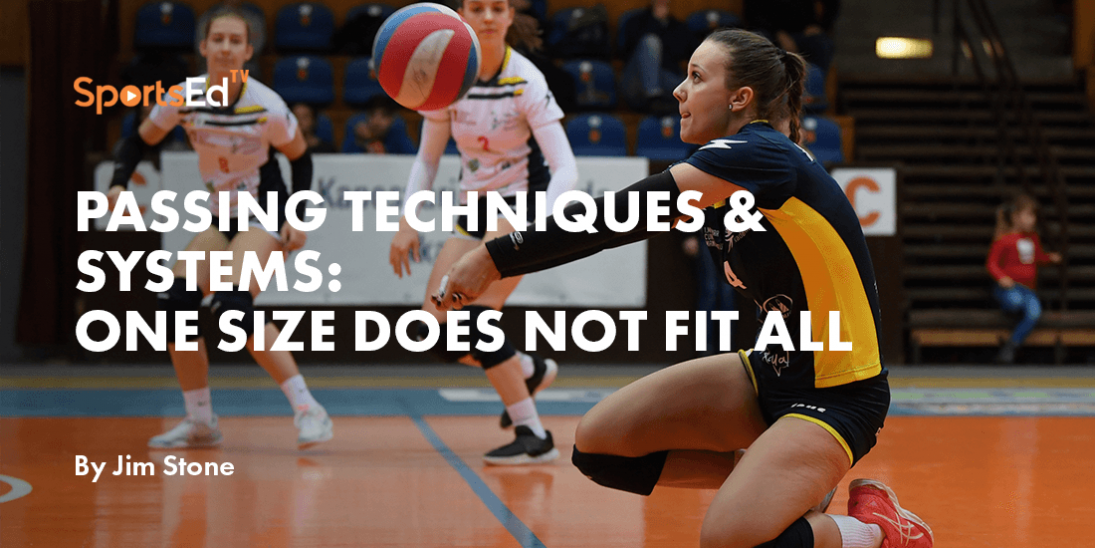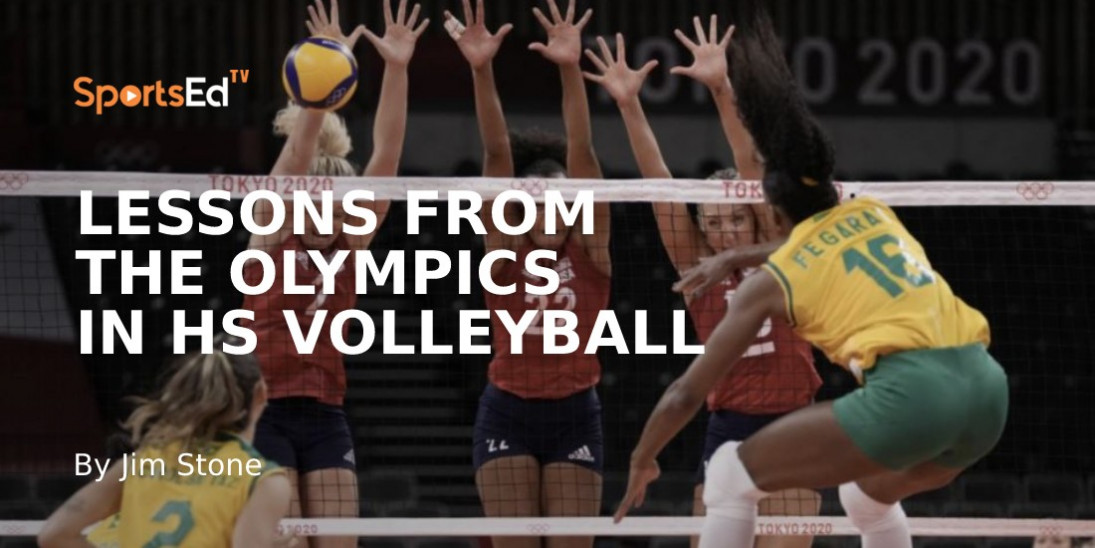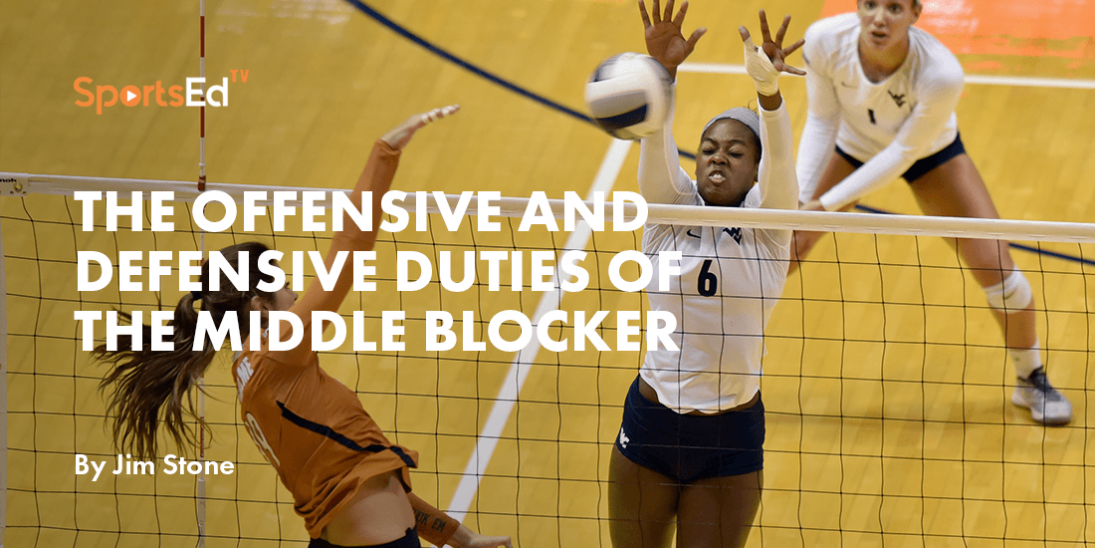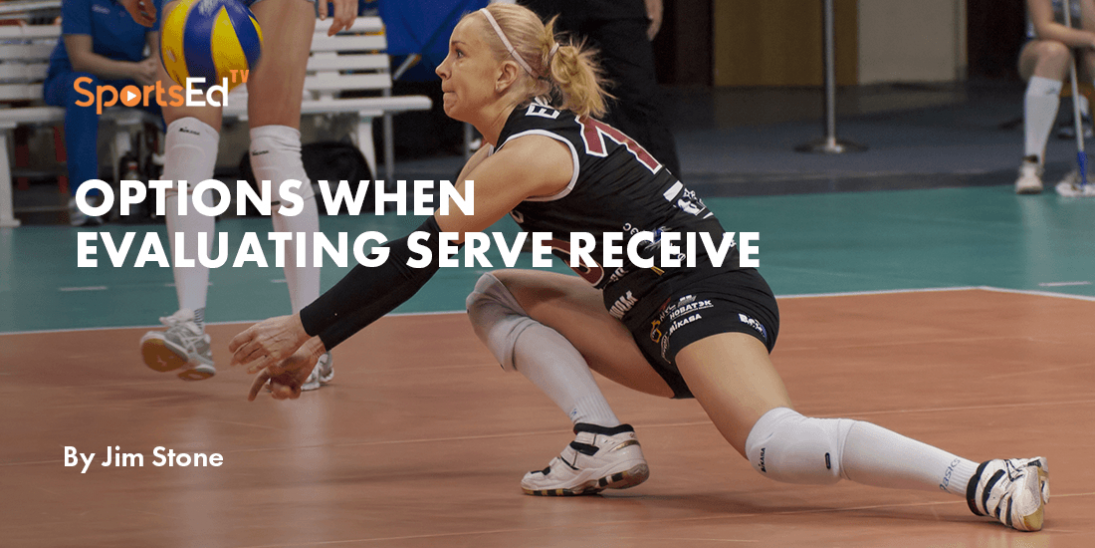Volleyball
Welcome and thanks for visiting...

Volleyball Offense: 9 Fundamental Principles
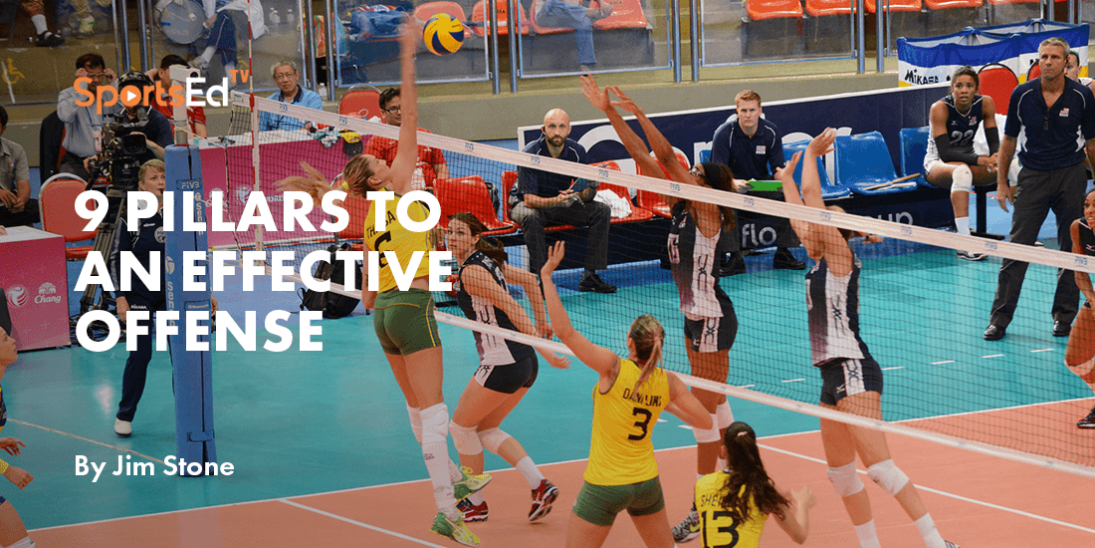
The foundation of any successful venture lies in its core values. These values guide decision-making, shape daily routines, and dictate time spent. As a coach, it's essential to have a set of core values that influence your actions and decisions and that your team members understand and embrace.
When it comes to the game, core values play a crucial role in shaping the offensive strategy. A coach's values regarding offense will provide a clear direction and framework for practices. Without this, it's like wandering aimlessly, as the saying goes, "if you don't know where you're going, any road will get you there."
The mentor's routine training exercises ought to echo the desired final outcome. Your fundamental attacking beliefs will serve as the guide to this end result.
What is an offense in volleyball?
In volleyball, offense refers to the strategies and tactics a team employs to score points against their opponents. An effective offense typically involves a combination of accurate setting, precise passing, and powerful attacking. The primary goal of the offense is to create opportunities for spikers or hitters to attack the ball and put it into the opponent's court, making it difficult for the other team to defend or return the ball. An efficient offense will also utilize various techniques, such as different set heights and tempos, to deceive the opposing blockers and create scoring opportunities.
How to win a volleyball game
An element of my attacking tenets revolves around the straightforward objective of efficiently reaching 25 points. How to Get to 25 Points?
- Kill 15-16 points per set
- Block 1-2 points per set
- Serve 1-2 aces per set
- A good opponent will only give you 6-7 points per set.
Total up the above, and you’re at 25 points.
If you fail to accumulate 15-16 attack kills per set, you must compensate from other categories. This can be difficult, particularly against a strong opponent reluctant to concede points through mistakes!
If your squad surrenders over 6-7 points per set, you diminish the points your rival must secure. You'll likely lose any set where your team forfeits ten or more points through errors.
You'll amass more points by executing kills than any other skill. Teams weak in attacking will also find it hard to claim sets. Prioritizing the capacity to score kills and implement a potent offensive strategy in your training sessions is crucial. Distinctive principles affecting how you instruct your offense are vital for a triumphant team.
Nine offensive pillars
Over time, I've established my offensive pillars. They aren't ranked by importance. All hold equal significance because one principle influences another.
Fundamental Principle #1
Outnumber Blockers with Attackers – If there are three attackers against three blockers, the defense stands a fair chance of successfully defending. The likelihood increases for the defense if a front-row setter is present, resulting in two attackers against three blockers. If the offense can proficiently execute a back-row assault, there are now four or five assailants against three blockers. The probability of the offense scoring rises significantly. I urge mentors to keep potent attackers on the court in the back row. However, merely having skilled attackers present doesn't ensure victory. The back-row assault must be employed tactically, with accurate timing and precision.
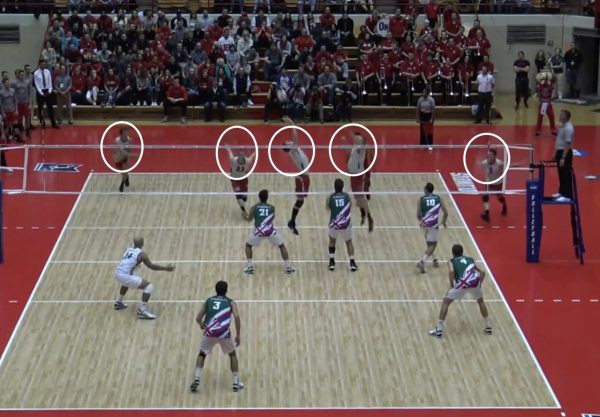
Fundamental Principle #2
Attackers Must Be Present at Both Antennas – The offense needs to compel blockers to defend the entire net. Generally, there's no issue with the offense attacking from the left front position (position 4). However, in two-hitter rotations, the right front (position 2) is often neglected. When this happens, blockers shift and only need to defend half the court, giving the advantage to the block. Some mentors address this by employing a 6-2 offense. There are pros and cons to the 6-2 system, but it does tackle attacks from both antennas. If operating a system with a front-row setter, the middle attack must be adept at attacking from behind the setter with either a one-foot (slide) or a two-foot approach. Another option is to attack from the right back (position 1). Attacking from the right-back is a crucial aspect of the men's game but not as prominent in the collegiate game.
Fundamental Principle #3
Attacker Decision-Making – The attacker must establish a decision-making hierarchy when spiking.
- Kill the ball - The primary responsibility of the attacker is to score a point. If they aren't scoring, they're either costing your team a point (attack error) or providing the opponent with a scoring opportunity.
- Recycle - If the attacker can't score, they can recycle the attack by targeting the block, covering the blocked hit, and then attacking again. As long as the offense possesses the ball, the defense cannot score.
- Target the Setter - Generally, teams are less effective when a non-setter handles the second ball. If the hitter can't score or recycle, attacking the opponent's setter becomes the next priority.
- Target the Best Hitter - If the setter is blocking and the attacker can't score or recycle, directing the ball to the opponent's top hitter is the next priority.
- Keep the Ball in Play - While attack errors are inevitable, players must recognize their duty to maintain the ball in play. If all previous options are unavailable, keep the ball in play and strive to win the rally.
Fundamental Principle #4
Employ If/Then for Information Gathering – I recommend coaches teach their players the If/Then concept when attacking (or in other game aspects, too). The "IF" gathers visual data, while the "THEN" is the solution. For instance, "IF" the outer blocker is late, "THEN" I will target the line. Or, "IF" there's a short outside blocker, "THEN" I will strike over the smaller block. Exploiting visual cues when attacking should be emphasized.
Fundamental Principle #5
Target the Gaps – Both assailants and setters should be mindful of the blockers' starting positions and proactively move to open spaces for attacking. A hitter approaching a static blocker is making an unfavorable tactical decision.
Fundamental Principle #6
Attackers Require Adaptable Situational Footwork – Every skill in the game is situational. All attackers should build on a four-step spike approach foundation. However, perfecting various approach angles (inside-out, outside-in) and three-step and two-step attack approaches is essential. A point I stress regarding attack footwork is "off before out." Moving off the net during a transition play is crucial for a dynamic four-step approach.
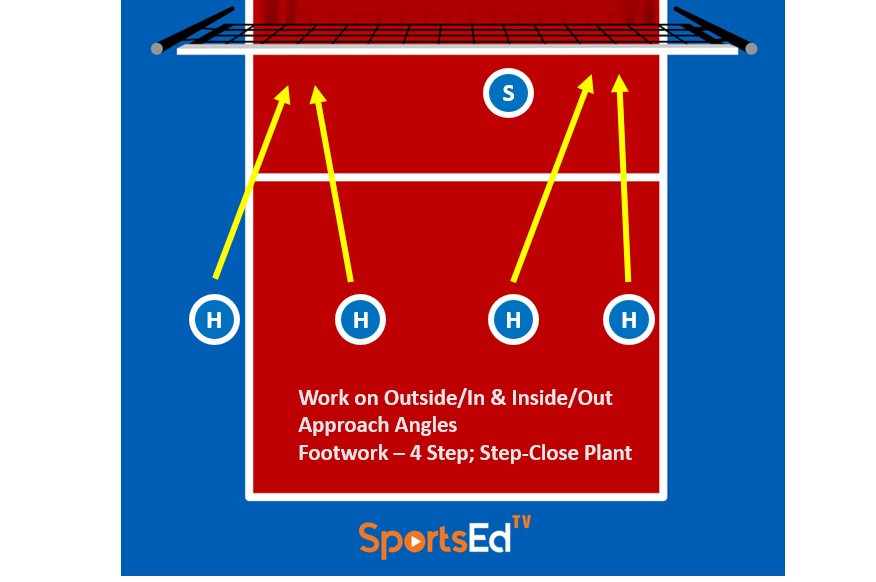
Fundamental Principle #7
Set Tempo Underpins the Offense – An efficient offense is rhythmic. Sets are consistent in trajectory and pace, enabling hitters to attack smoothly and rhythmically. The offense tempo is the coach's choice. Lower sets are typically easier to attack than sets dropping vertically into the attack zone. However, this is my personal preference. Establishing an offense's rhythm should be done objectively. For instance, the hitter is on their first step (right foot) when the setter touches the ball. Alternatively, a faster tempo has the hitter on their second step (left foot) when the setter contacts the ball. A quick hitter might be on their last step.
Fundamental Principle #8
Practice Attacking Off The Hands of the Block – The blockers are tall and talented at higher levels of play. Blockers of this size will reduce the court area for the hitter to attack. To increase the area to be defended, the attacker must become adept at attacking off the hands of the blocker. Practicing this skill daily is recommended.
Fundamental Principle #9
Incorporate Sideout Offense in Every Practice – A team that sides out more efficiently than the opponent will win the set. The same statement doesn't hold for the team with the most blocks or the team digging the most balls, etc. If siding out is crucial to set or match results, practicing this game element daily is recommended.
There are other significant elements of a team's offense. Nevertheless, I've discovered that these nine fundamental principles have the most substantial impact on cultivating offensive effectiveness. The challenge lies in creating a practice environment that enables players to excel in these areas.
Some of these principles depend on the players' age. However, as younger players progress in their abilities and athleticism, incorporating these skills into your daily practice routine will enhance your team's offensive potential.
Make sure to read The Nine Pillars Of Volleyball Defense



